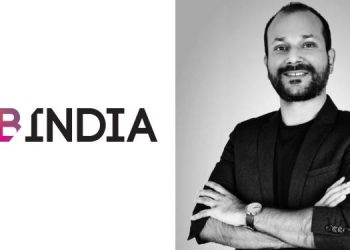The Advertising Standards Council of India (ASCI) and Futurebrands, have unveiled the GenderNext study – a comprehensive actionable insight study on the representation of women in advertising.
“There have been notable shifts in the depictions of women in advertising over the last few years. There seems to be an effort to break overt stereotypes that had been integral to such depiction for many years,” states the report.
In categories like beauty, we see a body language that is more active, not only coy, and a more confident gazing back at the camera. Women are also seen encouraging their husbands to take on some load of domestic labour.
There are some more notable strokes of change in depictions of women in advertising:
- Some lowering of levels of anxiety built around her in different contexts – especially food and beauty.
- A more diverse mix of faces and physicality is beginning to appear in a handful of brands.
- Women are being portrayed as wielding power and strength, having ambition and drive, views and opinions.
- Digital and app led brands in food delivery and dating are trying to seed new norms that are trickling into portrayals – women shown valuing convenience and leisure or making the first move in a dating context.
5.Dating app advertising is attempting new depictions of women as both desiring and being desired.
- Some telecom service providers seem to show more real notes of friendliness and camaraderie between young women and men, normalising realities of educational and work spaces.
- Many of the tropes that typified motorcycle, men’s deo or hair styling product advertising where the woman was overtly sexualized, have either faded or been ‘corrected’ to be less objectifying in their depiction of women.
- Leading brands with national presence in beauty, skin care and colour cosmetics seem to be aiming for more inclusive, less discriminatory portrayals of beauty.
- An important note of change is in the depiction of men in advertising, especially how they are portrayed in the context of domestic life. There are some new depictions of men’s roles in and their responses to the emerging attitudes and demands of women.
Even as marketers and advertising professionals have evolved the portrayals of women over time, closer inspection of content reveals the tendency of these new progressive notes to be tied to less than ideal sub-structures of meaning. Even as this study recognizes some signs of movement in depiction of women across categories, it also seeks to reveal the stereotypes that seem to stay stubbornly lodged in a large proportion of advertising that portrays women and also targets them as consumers.
As one looks closer at advertising content and studies a large sample of it, there emerges a gap between the intent to create more positive depictions of women and the current reality of depictions.
Some more diversity in women is shown, yet uniform flawlessness of women persists: The vision of beauty may have begun to show more diversity – but it still imposes the unreal standards it always has. We might see darker shades of skin or different textures of hair, yet the typical woman seen in these ads is still an exemplar of common notions of perfection in multiple ways – skin, hair, body, facial features.
Dramatised, not normalised strength and ambition of women: Depictions of women being strong, ambitious often dramatise the woman’s struggles, devote disproportionate time playing out the challenge while giving only a tiny glimpse of the win.
Women are shown free to do more but not less: Though women are being shown making new choices like working outside the home, becoming an entrepreneur, financially contributing to the household, they seem to do so while continuing to bear the load they always have – managing the emotional and physical needs of their family. In fact, some of the most celebrated ‘women oriented’ ad campaigns tend to draw out a new trope: the ‘over-burdened’ woman rather than normalise the support she needs.
Tendency to celebrate the bestower of freedoms more than the woman herself: When portrayed gaining freedoms, women are shown to be very thankful to and appreciative of those that have ‘granted’ her those freedoms – typically a male figure (father). The end effect tends to valorise the person who is typically withholding freedoms from the woman, rather than normalising an idea that women do not need to constantly bargain for or be grateful to receive the same.
Women continue to be the primary bearer of the emotional burden of their family or extended social spheres: Women are entrusted with bearing the emotional load of their families – in charge of creating joy, always ready to empathise, dealing with the anxieties and needs of others. There is little relief for women or sharing of this burden by others. This trope seems to have trickled into depiction of women in the workplace as well.
Women are unable to shrug off expectations of femininity even when portrayed as having made divergent choices: Even when depiction conventions are broken and women are shown as exercising new choices – getting divorced, not bearing a child, choosing to be ambitious professional – these depictions remain tinted with stereotypes of femininity. Women continue to be shown unabatedly caring for others, investing their time and emotion to make others feel comfortable, looking their best in situations that may not always allow for it.
Analysis of cross-category advertising content reveals that a significant proportion and the most widely viewed cache of advertising seems to continue to borrow from an inventory of stereotypes.
Women trapped in a loop of portrayals: Content analysis of advertising reveals oddly persistent images that appear repeatedly. Every category seems to have its own ‘key image’ frames that appear across different brands. Whether it is a woman holding a tray of food, young girls wearing monochrome costumes in beauty and fashion ads, women being instructed by male voice-overs in detergent ads, young women gazing anxiously into the mirror in skincare ads, women being cheerful and carefree while washing dishes or cooking multi-course meals for the whole family – these images keep making a consistent appearance.
Much of the stereotyping lies in the subliminal background of a film or image: Stereotypes reveal themselves when one sees between the frames. It is in the general body language, appearance, attire, task-pairing, spaces in which women are set in, that a gender bias makes its appearance. For e.g., women wearing traditional clothing are often cast as being less aware than western attired ones, food advertising typically distances the woman from moments of life by placing her in the kitchen, skin care ads show groups of young women moving and mouthing jingles in sync.
Women’s empowerment-oriented advertising pins new stories on existing cultural stereotypes of women: Even as advertising scripts show women being more successful, more independent – they stay loyal to existing cultural stereotypes. Women are increasingly shown to be independent but rarely to be free of the social behaviours typically attributed to them. E.g., new attributes like entrepreneurial zeal are still shown alongside the woman being caring and continuing to fulfil domestic duties or the emotional care-taking of her family.
New stereotypes load women with burdens they may not seek to bear:Old stereotypes are being replaced by some new ones. The ‘working woman’, the woman who ‘balances work and home’, the ‘cool’ or ‘bindaas’ teenage girl are part of a new set of representations. Though each of these are meant to reflect the new lives and choices of women, they are also stereotypical new ways of being. We must ask ourselves if women want to be celebrated for bearing more burden at home and work, or for their fashion and style to be interpreted as an invitation to flirting.
The male celebrity has coercive power over women in ad narratives: Several categories like food, home cleaning, detergents – seem to use the male celebrity in a particularly authoritarian mould – evaluating, rejecting and then correcting a woman’s actions or choices. A surprising factor of this coercion is that it usually plays out in the domain of the woman’s home, where the male celebrity/movie star usurps power and space that should not be his to claim.
A content analysis of advertising across categories reveals that categories share a set of commonly appearing tropes. Every category, e.g. food, beauty/personal care, automobiles etc. has its own bank of depiction stereotypes that reveal how the category sees its consumer. It is likely that some of these stereotypes are so deeply embedded in the imagination of brand marketers and advertising creators, that they do not actively perceive them.
Food categories often show women catering to multiple demands placed on them by different members of their family. Though it creates a very happy picture of a family and its joys, this stereotypical depiction tends to obscure the burden of labour and demands placed on the woman behind a smiling and happy demeanour. Since women are shown to be happy and even energised in this context, this creates a sense that all her service must be joyfully given. This normalises the unthinking placing of multiple expectations, tasks and domestic chores on women and legitimizes the expectations of the husband/children/elders with regards to being served without protest.
Signs of shifts as visible in the depictions of women in the content of TV, Cinema, OTT and Social media.
Depiction of women in TV seems closer to how they appear in their lived reality: There are today several additions to the earlier, mainly melodramatic depictions of female characters. There seems to be an attempt to make the woman seem more real and relatable – be it in their attire, fashion, dialogue, expressions. Even the homes or other spaces they inhabit seem closer to reality. We see women attired more simply, reflecting an everyday fashion sense and displaying more relaxed body language and facial expressions.
ASCI has done a content analysis of over 600 ads across film and print, across national and regional brands was carried out in order to identify the most repetitive images and portrayal contexts of women. The pool of advertising studied contains Indian advertising across categories and brands from 2015 to date.

















